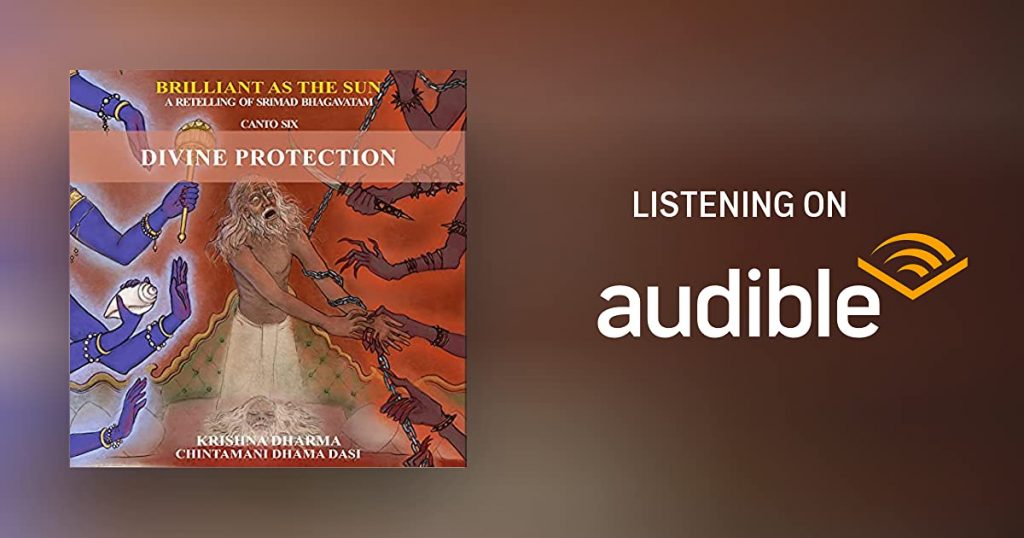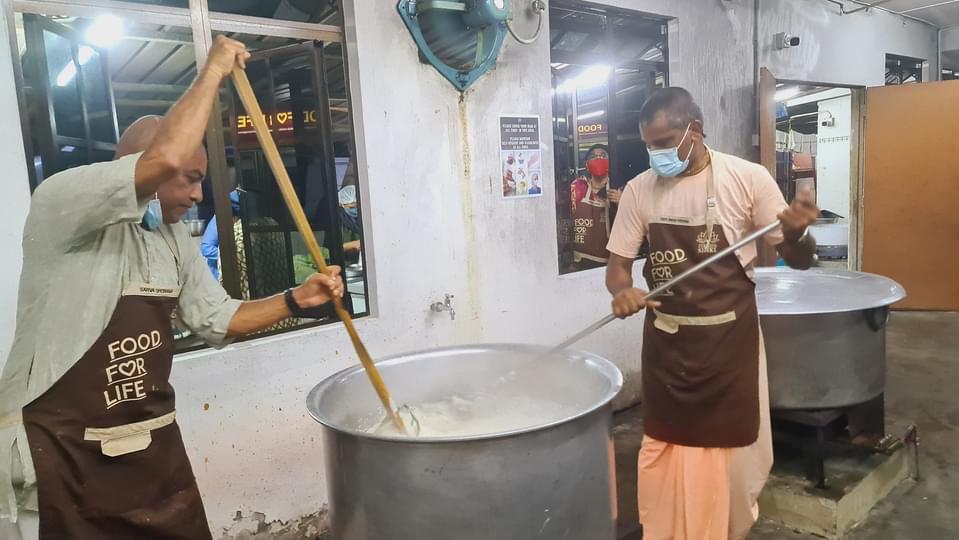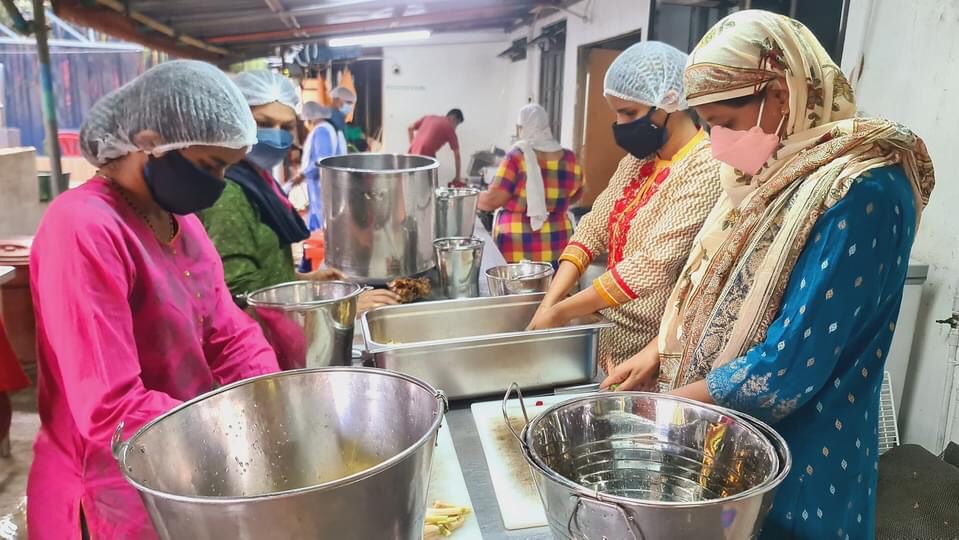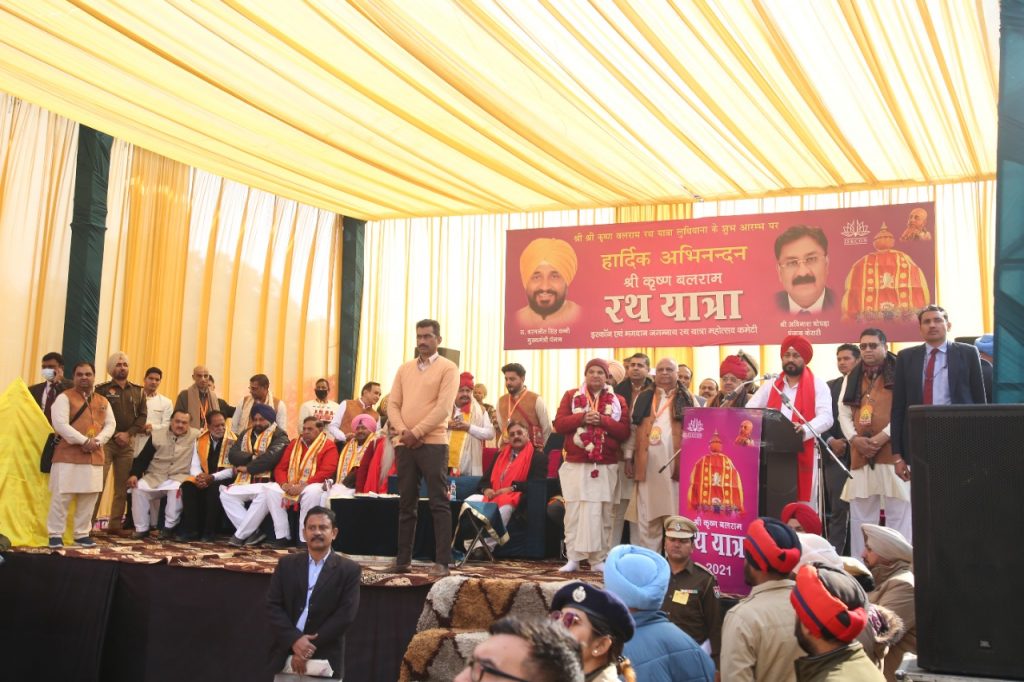This Christmas marks the one-year anniversary of the Hare Krishna Community Radio Station (HKCRS). We sat down with the visionary behind this initiative, Her Grace Sudharma devi dasi (ACBSP), to chat about this milestone, the journey thus far, and the road ahead.
What inspired you to start the radio project?
Sudharma devi dasi: The concept grew out of my thinking before covid. I wanted to see more online, digital content. We have plenty of that now, but audio,– listening, hearing, a process so central to devotional life — is still greatly underutilized. And it’s a great tool. Easy to work with, and easy to access for listeners whether they are at work, driving, walking, moving around in the home or relaxing. Plus I have seen the power of radio here in the States even with the growth of movies and TV through podcasts, NPR and political talk shows. The devotees too have had great success with Radio in Italy and Salt Lake City.
But beyond the value of radio as a platform and medium, radio is an easy, effective means to bring together, all in one place and then to convey. the broad and encompassing elements of devotional life. Just like how National Public Radio, NPR, has diverse human interest programming that features everything from the story of one person’s struggle, to world news, to travel, to social insight. to how to cook with spices; I would like to showcase all of the dimensions, personalism and warmth of devotional life through a diverse readily accessible radio platform. So, the vision is to ultimately build a devotional “NPR” with music.
What do you mean by a devotional ‘NPR’?
Programming that reflects the full depth and diversity of devotional understanding in a manner appealing to a broad inquisitive audience. A full understanding of the depths of devotional life, which also includes the academic & intellectual contemplation, life beyond the bodily concept, transcendence of duality and polarity, historic components that link the history of the world, how the role of consciousness and radical personalism — seeing God in every heart and atom — opens up our understanding of the world around us – personally and scientifically; a contemplation of social dynamics when personalism and a mood of devotion and service become central — including a non-exploitative view to life. We can run a lifestyle and cooking shows, uplifting human interest stories, have discussions of life after death, consider the environment, build a world of appreciation for the animals, and every living soul and facets of nature as a family, have interreligious dialogue and so much more. Not to mention including beautiful devotional music by our very talented devotional artists, dramas, pastimes and reflections. There are so many ways to deliver Krishna Consciousness to the Western World innovatively, respectfully, and relevantly. And I am hoping we can develop shows that offer this type of innovative devotional thought to the world.
Have the devotees been helping you with this project?
Yes, quite a bit actually. Developing a radio station like Hare Krishna Community Radio requires the permission, generosity and involvement of many different artists, presenters, talk show hosts, individuals and communities. For instance, when I first began contemplating the project, one devotee helped me sort out my needs for equipment and lent substantial insight into broadcasting, how it works and how to best approach it. Those few hours of time were so insightful that I was then ready to move forward with clarity and determination.
Visvambhara of the Mayapuris was the first to step forward and say, ‘let me help you.” Which he did, by gifting me my first recorder, a tool that I have built the radio upon. He and Vrinda also offered me full access to their media library, being the first to offer their music and talk to the radio.
As I moved into the project, many stepped forward with support, ideas and funding. Plus over 40 devotees helped with our Gita Jayanti launch. While Madhumati and Rangavati began readings for the radio with beautiful additions like the Story of Narada Muni, Aghasura and so many more. Then you have devotees who list the radio on their sites, like Rukmini with Urban Devi. And of course, the Alachua temple and community where the radio originates from. Individually significant too is the effort of Tiffany Cooper, who has been loading content for Fridays from the NA Vaishnavi Ministry for a year now, every Friday, and helped in a number of other practical important ways. All told, the devotees have been very encouraging.
Who is your audience and what is the mood of the radio?
Currently, the radio is geared to practicing devotees with content from across the spectrum of the devotee community. But as we can, we will be adding more and more content geared to the general world community, opening thoughts and hopefully hearts to devotional life from a broad-minded perspective.
I think it is important too, that the radio programming, as well as all of our outreach, emulate a mood of open-heartedness, kindness and giving. In a way that encourages every individual, no matter what their situation is, to feel that there is a place for them in the spiritual society and the spiritual world.
There is a story Rukmini likes to tell that illustrates this point.
Prabhupada is speaking with a devotee and the devotee asks “How can I serve you?” Prabhupada replies, “You can go where I cannot go and give the people there Krishna.” The devotee then says, confused “Where is that Prabhupada? You go everywhere.”
Prabhupada answers, “You can go into the future. And from the way that you treat people, they will know that they are beloved by Krishna.” So we want to make the very best of what we have, of what we have been so kindly given, and share that, in a generous mood and spirit, in a welcoming way.
In essence, the ultimate goal and what inspired me to do the radio is that I want to give something that resonates within the heart and helps each individual to want to experience devotional life and find shelter in the association of like-minded souls. And I want to invite others to take ownership within this platform and present with their understanding and experience, a full range of devotional programming.
What have you accomplished so far?
To date, the main accomplishment has been getting the radio platform established and becoming conversant with the dynamics, building our library, obtaining permissions and providing a great deal of variety and themed programming.
Hare Krishna Community Radio now represents a consortium of artists, podcasters and presenters with well over 2000 tracks in our ever-evolving library. And anyone can tune in or download podcasts, no matter what time of day or where they are in the world 24/7.
So, what’s next?
As to what’s next, this year I would like to focus on personalizing the broadcasting, by bringing in a variety of voices — announcers and hosts, giving our broadcasting an up-to-the-minute feel. We will also be working to build a presence on Facebook, hopefully, Instagram too.
We will continue offering 24-hour streaming and uploading podcasts to our podcast pages. And will also be uploading to Soundcloud.
More innovatively, I will also be seeking projects and communities to take airtime and share with the world devotional community ‘what’s going on in their communities. Hearing from the various communities and projects would be interesting and inspiring for devotees as temples are built, special projects, conferences and kirtan festivals are held, and we share positive, thoughtful istagosthi together.
And of course, most importantly, we will be working to acquire, develop, and present innovative outreach content.
That’s a lot, could more devotees get involved?
At this point, I am very interested in including others in the project, in whatever way, shape or form they can. We’re looking for innovative thinking portrayed from different individuals, news and insights from projects around the ISKCON globe, and individuals helping too with the vision, organization, and mechanics of the radio.
There is so much any individual who would like to get involved can do that can be creative, for which they can take ownership, offer their own flavor, and be successful doing. Whether it is kirtan, round table talk, current event discussion, ethical discussion. deeper philosophical discussion, devotional meditation and sharing, there is a great need and demand for a variety of presentations. Exciting individual projects and capacity for team building and positive Krishna Conscious thinking together are required and feasible.
There is also a need for everyday involvement, loading shows, recording PSA’s, announcements or advertisements.
Now is a good time for interested devotees to participate. We really need people to be involved in order to offer to diversify and bring out the best of what we have to give.
One aspect that you brought up that I see as so clever and really important is that everything can be linked in a central place. One question that people may ask is why reshare things on the radio, so many people have their own Youtube channels why not follow them? For me, it can be very overwhelming to follow so many people and keep up with the notifications, so it will be so much simpler to find everything that I need in one place.
That has been the first initial goal of the radio, to bring together the best of what is already out there. And yes, it is time-consuming to surf the internet. And, of course, by having everything together actively in one place, each contributor is mutually supporting everyone else. A listener may turn in for one type of programming but will hear so much more.
Through the radio too, you can just turn it on, do what you do, and be provided with the full spectrum of music, talk and devotions available. Plus we want to hear from people what they want to hear! Tell us!
Finally, if you have a podcast, a song, a reflection you would like added, we can include it, adding your artistry to the ever-increasing listenership of Hare Krishna Community Radio.
It is really inspiring to have a platform that brings everyone together in one place, one place to bring all of it together and mutually share and inspire.
And, at the same time ultimately do that in a way that will be exciting for both the devotees and interesting for people who are curious and want to know more.
Because we are a preaching movement and there are so many different people out there, that we have to have different ways of reaching them. There are so many devotees who have so much to offer, and even if they have been sitting with an idea for a while, not sure where or how to start, this is a place where they can come and plant their seeds and water them and we will help you to grow in this safe little garden that we are building.
Exactly. Let’s help each individual to experience their full worth. find a way to be spiritually connected, and share with others their unique understanding and experiences. There is more to life than working day in and day out for sense gratification, or as Prahlad Maharaja called it, chewing the chewed. And it is a life that is most satisfying and uplifting and moves us beyond the stresses of everyday life. Each of us can know ourselves for who we truly are. And absorb ourselves in a life that is devotional. And share our insights and experiences together.
I was reading an article about how the different generations think, especially Gen Y and Gen Z. They want their voices heard and they want to be part of the solution.
Yes, the future of the world is in their hands. Their voices do need to be heard. They want to see beyond the prejudices and hatred, and degradations and give value to their own self-worth and the value of all others. And of course, have huge questions about the future of the world and are looking for innovative answers.
We need to connect with them through their own generations sharing their voices.
We need to be open to hearing, offer support, and open our platforms to their discussion, providing ownership. There may be an interest in topics older generations have shied away from. Human justice for instance: racism, sexism, disability, homosexuality, education, food justice, or poverty. There is plenty of room for contemplation of diverse human interest discussions, and healing in Krishna consciousness. As Srila Prabhupada writes: There is a need of a clue as to how humanity can become one in peace, friendship, and prosperity with a common cause. Śrīmad-Bhāgavatam will fill this need, for it is a cultural presentation for the re-spiritualization of the entire human society.
No matter what our position in life, we want to provide shelter, answers, and a devotional perspective. No matter who you are, what you are doing, what your birth or belief system is, you can live to your fullest potential in devotional life. There is no need to change your lives, just add Krishna. Prabhupada said that so many times. Just put Krishna in the center. We can relate on all of these different levels if we open ourselves up to doing that.
That is what is so amazing about this platform is that it is a place to bring in all the different voices. It is not a show just about one thing.
That is why I can’t do it by myself. All I can do is provide a platform. I am really hoping others will understand the potential and bring forward their voices. Then the radio project can be successful and fulfill its vision.
So whatever your voice is, whatever your voice and experience have to offer that can give others Krishna and devotional life in a relevant and reasoned way, come and share it on the radio, Hare Krishna Community Radio!
Yes, we need your voices, your vision, your creativity to make the radio all it can be.
I am inspired by this message of inclusivity and celebrating our differences in positive, kind and uplifting ways And I am inspired by the variety of programming that can be offered when others decide to contribute.
Yes, and there is so much to be done. We really do need the involvement and variety of our experienced, insightful devotees.
What are some of the ways that people can get involved?
They can share, either doing their own podcasts, sharing their devotional experiences and understandings, or bringing together musical, meditation, and entertainment shows with their own content or already available. We can also use help organizing PSA’s and announcements, reading from the books, or hosting shows. Everyone has something special and unique they can offer.
Another area we really need help with is getting the word out, promoting the station and its values on Facebook and Instagram.
And then there are the internal aspects of organization and management, like managing the programming calendar, technical support, editing, financial planning, and more.
Finally, the radio needs heads and vision, individuals who can help us strategically put our minds together and develop the concepts and messages that would be most effective.
In short, people who are inspired by the concept of the radio and actively interested in investing their hearts and minds and creating something innovative together.
Please listen to Hare Krishna Community Radio, and please share our links.
Thank you Sudharma, for providing a platform of outreach that others can participate in through Hare Krishna Community Radio. And for having a vision for outreach that is relevant, warm-hearted, and personal. I hope devotees will understand the value of what you are offering, and seriously consider how they can contribute.
Thank you for having me and sharing this interview.
The radio is a great asset, with 24 hour content from our kirtaniyas, leaders, podcasters, innovative thinkers, and pastimes. But it can be so much more. There is a lot to be done, creative, enjoyable work, and I really do hope others will come forward and contribute. Thank you Karuna Sakti, for your time today.
If you would like to take on any of these services please contact: susanwieland@gmail.com karunasaktidd@gmail.com
Listen to the Hare Krishna Community Radio Station here: https://krishna108.airtime.pro
If you would like to offer a service not already listed, please contact us and we can discuss how you can be involved.
General Intern
Assistant to the Director ➤ Project Manager
Communications Director
Audio Librarian
Tech Support
Audio Editing
Show hosts
The post Celebrating the One-Year Anniversary of the Hare Krishna Community Radio Station (HKCRS) appeared first on ISKCON News.
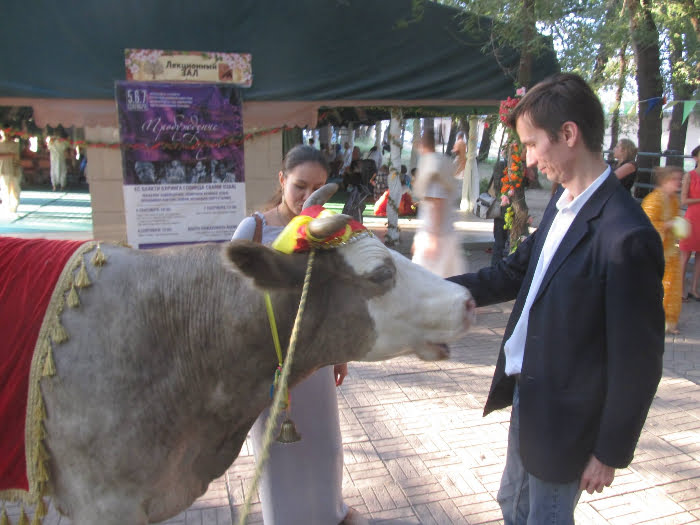
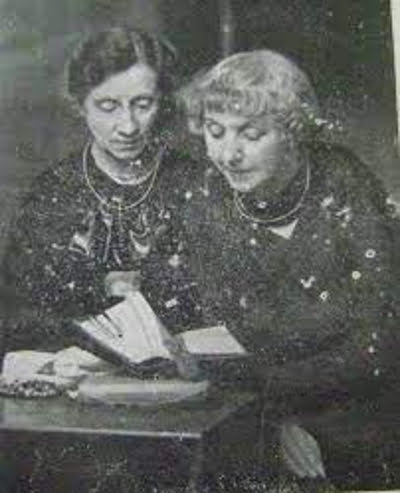










 By Satsvarupa das Goswami
By Satsvarupa das Goswami







 By Vijaya Das
By Vijaya Das



